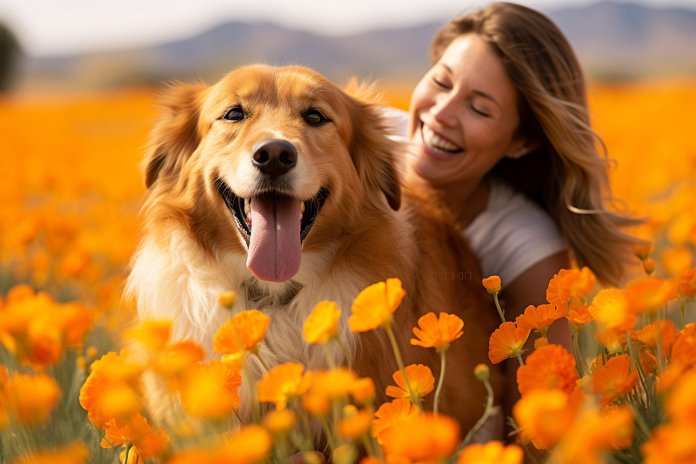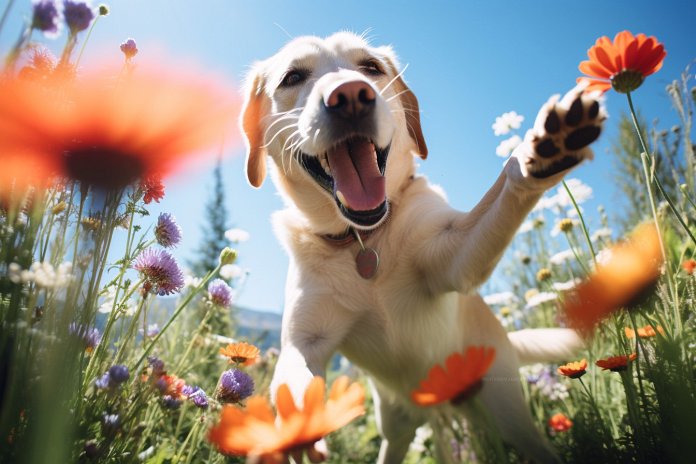
Love is a powerful and beautiful emotion, often described as the most powerful human emotion. When it comes to our dogs, we show them love in various ways, taking care of their physical needs, pampering them, and adjusting our routines for their benefit. Dogs, in return, demonstrate their understanding and love in different ways, both through active behaviors and subtle signals. Understanding your dog’s disposition and signals is essential for maintaining a loving and communicative relationship.
Signs a Dog Knows They are Loved
Dogs show their love in both obvious and subtle ways. They may stare at you or lift their left eyebrow or ear when they see you, indicating their adoration. Other signs of love may include blinking, licking, a calm demeanor, relaxed posture, extended tail, open mouth, and bringing you toys. Dogs also seek comfort by leaning on you or using your clothes for their comfort, and they show genuine excitement when you come home.
Body Language
Signs that your dog knows you love them include staring, ears back, blinking, hanging tongue, and other subtle signs of affection. They may also show their love by demonstrating a calm disposition, leaning on you, bringing you toys, stealing your clothes to lay on, and being happy to see you when you come home.
The History of Dogs Knowing How Much We Love Them
The relationship between humans and dogs started with friendly wolves visiting human communities. Over time, both species learned to interpret each other’s signals and work together for survival. This relationship shaped the brain structures and emotional capacities of both humans and dogs. The loyalty and companionship between humans and dogs are unique among species.
The Science of Dogs Knowing We Love Them
Scientific studies have shown that dogs have the capacity to receive and reciprocate love in their relationship with humans. MRI scans have revealed that dogs’ reward centers and “love” parts of the brain are activated when exposed to their owners’ scent. Dogs also have the ability to recognize and discriminate human emotions through facial expressions and voices. Additionally, their oxytocin levels increase when they are exposed to their owner’s scent, making them feel secure.
Helping Your Dog Feel the Love
Building a loving relationship with your dog starts with good socialization and obedience training. It is crucial to start early in the socialization process, allowing the puppy to learn from its mother and interact with other dogs. Between 7 weeks and 4 months of age, expose your puppy to different textures, sounds, sights, and environments. Teach them basic commands like “come,” “sit,” “stay,” “lay down,” and “heel” using positive reinforcement and consistency.
Conclusion
Love between humans and dogs is a reciprocal emotion, and dogs have the capacity to understand and demonstrate love. By understanding your dog’s signals and providing proper socialization and training, you can cultivate a strong and loving relationship with your furry friend.
“Love is a reciprocal emotion, and your dog is more than willing to show loyalty and affection as your best friend.”

Tips & Things to Know
1️⃣ Pay attention to your dog’s body language: Dogs have subtle ways of showing their love and appreciation, such as staring, blinking, and licking. By learning to recognize these signs, you can better understand and appreciate the deep affection your dog has for you.
2️⃣ Show affection back to your dog: Just as you show love to your dog through treats, toys, and special attention, your dog may also show affection back to you. Pay attention to your dog’s behavior, such as seeking you out for comfort, leaning on you, or bringing you toys. These are all signs that your dog feels loved and wants to reciprocate that love.
3️⃣ Start early with socialization and training: Building a strong and loving relationship with your dog starts with good socialization and obedience training. Begin by touching and petting your dog from a young age, exposing them to different environments, and teaching them basic commands. Be positive, patient, and consistent in your training methods to create a loving and communicative bond with your dog.
Frequently Asked Questions, Answered ✅
1. How can dogs demonstrate their love for their owners?
– Dogs can demonstrate their love through behaviors such as staring, blinking, licking, and bringing toys to their owners. They may also show affection by leaning on their owners and stealing their clothes to lay on.
2. What are some subtle signs that indicate a dog knows they are loved?
– Subtle signs that indicate a dog knows they are loved include lifting the left eyebrow or moving the left ear back when they see their owner. They may also have a calm disposition, relaxed stance, and extended tail when near their owner.
3. How do dogs reciprocate the love they receive from their owners?
– Dogs reciprocate the love they receive by seeking comfort from their owners, leaning on them, and being happy to see them when they come home. They may also bring their owners toys and steal their clothes to lay on.
4. What scientific evidence supports the idea that dogs know they are loved?
– Scientists have conducted studies that show dogs have similar brain reactions to humans when exposed to the scent of their owner. Dogs also have the cognitive ability to discriminate human emotions and have elevated levels of oxytocin (the love hormone) when exposed to their owner.
5. How can owners help their dogs feel loved?
– Owners can help their dogs feel loved by starting early with socialization and obedience training. They should expose their dogs to different environments, people, textures, sounds, and sights. Teaching basic commands and being positive and patient with their dogs is also important. Taking a puppy class can help owners establish themselves as the leader and cultivate a loving relationship with their dog.